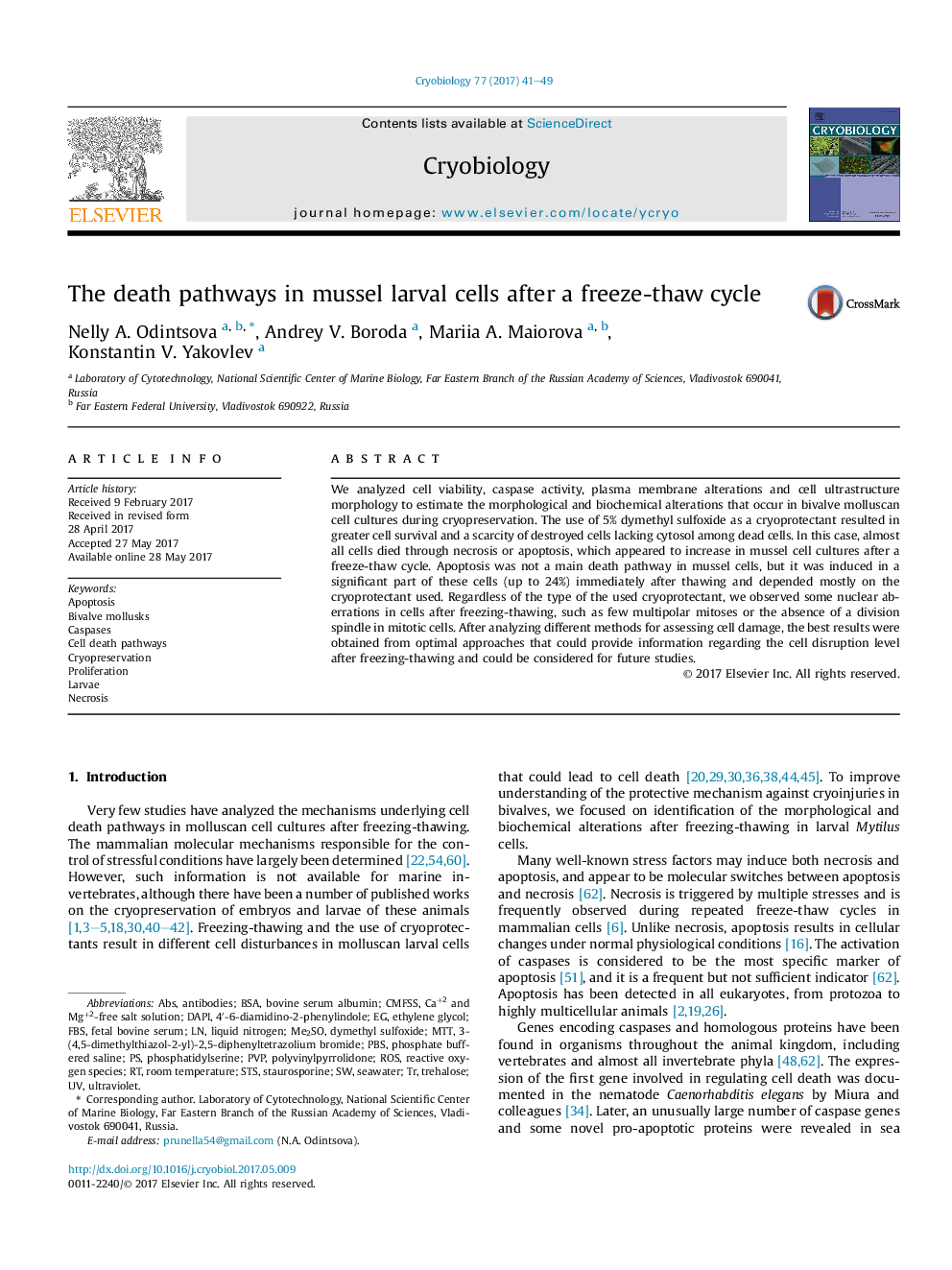| کد مقاله | کد نشریه | سال انتشار | مقاله انگلیسی | نسخه تمام متن |
|---|---|---|---|---|
| 5530794 | 1549442 | 2017 | 9 صفحه PDF | دانلود رایگان |
- The cell death pathways after cryopreservation were estimated in mussel larval cultures.
- The best cryoprotectant for bivalve cells was 5% Me2SO.
- The frequency of cells undergoing apoptosis depended on the cryoprotectant used.
- Few abnormalities among a low level of mitotic cells were found after cryopreservation.
- Most cells died through apoptosis or necrosis, that appear to increase after thawing.
We analyzed cell viability, caspase activity, plasma membrane alterations and cell ultrastructure morphology to estimate the morphological and biochemical alterations that occur in bivalve molluscan cell cultures during cryopreservation. The use of 5% dymethyl sulfoxide as a cryoprotectant resulted in greater cell survival and a scarcity of destroyed cells lacking cytosol among dead cells. In this case, almost all cells died through necrosis or apoptosis, which appeared to increase in mussel cell cultures after a freeze-thaw cycle. Apoptosis was not a main death pathway in mussel cells, but it was induced in a significant part of these cells (up to 24%) immediately after thawing and depended mostly on the cryoprotectant used. Regardless of the type of the used cryoprotectant, we observed some nuclear aberrations in cells after freezing-thawing, such as few multipolar mitoses or the absence of a division spindle in mitotic cells. After analyzing different methods for assessing cell damage, the best results were obtained from optimal approaches that could provide information regarding the cell disruption level after freezing-thawing and could be considered for future studies.
Journal: Cryobiology - Volume 77, August 2017, Pages 41-49
